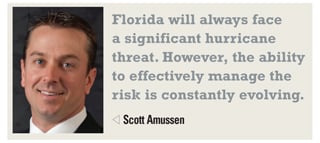Technology has advanced to the point where an individual risk can be analyzed as part of an automated underwriting process. Furthermore,  insurers can minimize the impact on the current underwriting workflow by capturing the data required for sound catastrophe risk management as part of the replacement-cost estimation process.
insurers can minimize the impact on the current underwriting workflow by capturing the data required for sound catastrophe risk management as part of the replacement-cost estimation process.
Many policies today are still underwritten using hazard-based assessments of catastrophe risk. These approaches, including rating territories and distance-to-coast, are insufficient because location is the only aspect of the property's risk profile considered. The use of these metrics can be counterproductive. A distance-to-coast analysis may suggest underwriting a less attractive risk three miles from the coast, while rejecting a better risk 500 feet from the coast.
A catastrophe risk assessment for an individual property requires more than the location. Catastrophe models evaluate other key variables—such as property-specific building characteristics, replacement value and policy terms—to determine the probability of various levels of loss.
Recommended For You
Want to continue reading?
Become a Free PropertyCasualty360 Digital Reader
Your access to unlimited PropertyCasualty360 content isn’t changing.
Once you are an ALM digital member, you’ll receive:
- Breaking insurance news and analysis, on-site and via our newsletters and custom alerts
- Weekly Insurance Speak podcast featuring exclusive interviews with industry leaders
- Educational webcasts, white papers, and ebooks from industry thought leaders
- Critical converage of the employee benefits and financial advisory markets on our other ALM sites, BenefitsPRO and ThinkAdvisor
Already have an account? Sign In Now
© 2025 ALM Global, LLC, All Rights Reserved. Request academic re-use from www.copyright.com. All other uses, submit a request to [email protected]. For more information visit Asset & Logo Licensing.








